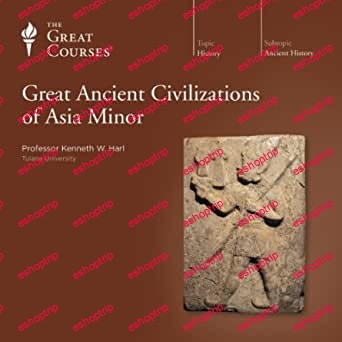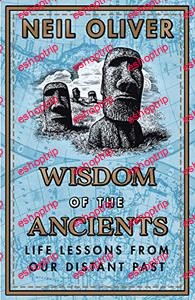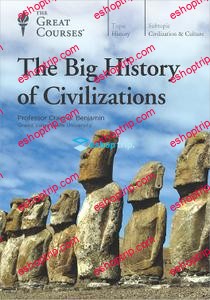Introduction to Paleontology (TTC Video)
Genre: eLearning | Language: English
Size: 3 GB
Produced in partnership with the Smithsonian, this fascinating and visually-stunning course opens brand new doors onto the 4.54 billion-year history of our world.
How did we—not just humans, but all of life, and planet Earth itself—come to be? To find out, you need everything from paleobotany and paleogeography to paleozoology—in short, what you need is the science of paleontology. From recently exposed fossils to new theories about our ancestors, this exciting science is positively exploding with new, game-changing discoveries. In Introduction to Paleontology, you’ll see how new technologies like dispersive x-ray spectroscopy and x-ray computer tomography have joined the tried-and-true backhoe, hammer, and chisel.
Introduction to Paleontology provides a walk back in time through Earth’s history from a lifeless planet to initial bursts of life, from extinctions to life again, and ultimately to our world today. Relying considerably on the National Museum of Natural History‘s curatorial expertise and extensive collections of paleontological fossils, maps, records, and images—with more than 2,500 gorgeous and unique visuals—you’ll see the world as it’s never before been envisioned. Additionally, the expert curators at the Smithsonian helped to shape the structure and content of the course, and reviewed each lecture against the most up-to-date information and understanding of paleontology today.
You’ll watch the continents shift in an infinitesimally slow but never-ending reformation of the globe. You’ll learn about the many times life on Earth has just barely survived mass extinctions and how the planet itself has changed, from a “Snowball Earth,” with ice covering the surface from pole to pole, to life-threatening global heatwaves caused by plumes of hot rocks rising from Earth’s mantle below ancient Siberia. You’ll follow 9 million years of natural selection, witnessing how a land dwelling creature the size of a raccoon living in India 54 million years ago would give rise to a line of marine mammals and, ultimately, Earth’s largest animal. You’ll even have a front-row seat at the 21st century discovery of an extinct species of our own genus, Homo floresiensis, the little people who lived on the island of Flores in the Indonesian archipelago.
Your guide through this revealing new look at Earth’s past, Dr. Stuart Sutherland,
Professor of Teaching in the Department of Earth Ocean and Atmospheric Sciences at the University of British Columbia, Vancouver clearly explains in 24 in-depth lectures:
- how the science of paleontology developed, coalescing information from geology, biology, ecology, anthropology, and archaeology to help us better understand the fascinating and sometimes shocking history of planet Earth
- the development and use of the tools of paleontology over decades and through many technological breakthroughs
- how micro- and macro-fossils can reveal information about the minerology, climate, and atmospheric chemistry of the Earth through time, as well as the interrelation of species with their environments
- how trace fossils can reveal information about a lifeform and its behavior, even if fossilized remains of the lifeform itself are not available
- why the only way to really understand our world is by considering it as a system composed of interactive parts, not as separate, stand-alone boxes of information
Dr. Sutherland is a paleontologist with particular expertise in microfossils and their usefulness in paleoceanographic studies. A multi-award-winning teacher with a great sense of humor, his fascination with his subject and passion for sharing the study of paleontology bring an infectious excitement to his lectures—whether he’s talking about a world-famous megafauna fossil find or the minerology of ocean sediments. In fact, when it comes to his love of fossils, Dr. Sutherland says “I’m a kid who never grew up. I get the same feeling of excitement as a 6-year-old when I wander through a collection like the Smithsonian’s.”
While the paleontological terms and species names might be unfamiliar, Dr. Sutherland makes the lectures very easy to follow by clearly stating up front exactly what topics and questions he will be addressing in each lecture, with a special focus on recent discoveries and new information. Each lecture also features a stunning array of visuals, many of which are exclusive to the Smithsonian’s legendary collections and have been expertly curated to help each topic come alive.
Meet Fascinating Creatures from Earth’s Past:
Earth today supports myriad lifeforms that seem very different from us, from microscopic arthropods to the massive blue whale. But in this course, you’ll learn about a variety of extinct flora and fauna that can be difficult for us to even imagine:
- Trilobites, arthropods that were extremely important in Earth’s oceans for more than 250 million years and, with their sophisticated eyes, were probably some of the first animals to gaze upon each other
- Opabinia, a swimmer discovered in the Burgess Shale with five eyes and a long, flexible proboscis with grasping spines
- Prototaxites, one of the largest Devonian land-based lifeforms, a massive fungus-like organism that could stand up to 26 feet tall
- Lystrosaurus, a stubby, shovel-faced, mammal-like reptile that could eat surface vegetation and probably also dig for food in the impoverished world after the Permian extinction
- Homo neanderthalensis, whom the Neanderthal Genome Project has now revealed to have been similar enough to Homo sapiens to have interbred and produced viable offspring, resulting in approximately 30 to 40 percent of the Neanderthal genome found in the human population today
What Caused the Cycles of Mass Extinction and New Life on Earth?
The expansion and spread of life on Earth has certainly not been a linear process of constant development. Far from it. Life on our planet has experienced numerous cycles of diversification followed by extinctions. The recovery and evolution of new life forms after a mass extinction has sometimes occurred in a relatively quick span of geological time and sometimes much more slowly. For example, before the Cambrian period, life on Earth consisted primarily of simple structures. But during a relatively short time in evolutionary terms, complex life forms seemed to explode onto the scene. Professor Sutherland also explores why Charles Darwin initially found this Cambrian explosion so disheartening for the development of his theories on evolution and how the Burgess Shale discovery greatly increased our knowledge of Cambrian life.
To better understand the cycles of life on Earth, paleontologists must ask questions that may sound strange to us today, such as:
- Could something we regard as a sign of a healthy biosphere today have contributed to the devastation of life on Earth over 359 million years ago?
- Has Homo sapiens already suffered a near-extinction in a natural disaster that may have caused a population bottleneck 100,000 years ago or are will still searching for a cause?
- Is it possible that a microbe— an extreme thermophile just like we find in modern oceanic hydrothermal settings— could be the Last Universal Common Ancestor of all life on Earth today?
- What series of events led to the Permian mass extinction, a catastrophe that wiped out around 90 percent of all species on Earth?
From Sea to Land and Back Again
When we look at today’s majestic whales, we sometimes wonder why their ancestors “chose” to return to the sea, swapping legs for fins. The question though is fundamentally flawed as creatures do not “chose” to evolve, rather, in the case of whales, millions of years of natural selection allowed the ancestors of the whales to inhabit increasingly more aquatic environments. Through many transitional forms, exemplified by creatures like Ambulocetus (the “walking whale”) these mammals adapted to and came to thrive in the aquatic environment. You will also learn the importance of understanding what is meant when species “share a common ancestor” as we examine the relationship between the hippopotamus and the whales of today.
When examining the evolutionary shift between land and sea, the significance of the Cerro Ballena fossil site in Chile comes into stark relief, not only illuminating the history of Earth’s large mammals, but also the process of paleontological discovery. When a construction crew widening the Pan-American Highway exposed a whale fossil site, Smithsonian curators and technology specialists were able to “excavate” the site digitally using 3D scanning. Scientists can now continue to study the site from afar while the fossils themselves are no longer physically accessible.
Learn about the Future by Studying the Past
Dr. Sutherland closes the course by discussing the role paleontology could play in the crises potentially facing planet Earth in the future. From the continual movement of continents, to known super-volcanoes that could be catastrophic to civilization in the future, to meteorites and asteroids striking the planet, Earth will most likely endure massive changes in the future as it has in the past. While there is little we can do to protect against some of these events, Dr. Sutherland gives special attention to those, such as environmental issues caused by climate change and pollution, that we may be able to mitigate with knowledge and vigilance. In his own words:
”By understanding the reaction of the biosphere to sudden catastrophic change in the past as preserved in the rocks and fossils, we can more fully appreciate current changes in the Earth system. But with conservation and proper environmental management these trends could be reversed. I think paleontology has a vital role to play in these efforts.”
Join Dr. Sutherland in witnessing some of the most thrilling paleontological finds in history. You’ll be amazed by the depth of information paleontologists can discern about planet Earth millions of years in the past and what that might tell us about our own future. Introduction to Paleontology will open your eyes to a history more thrilling than science fiction could have imagined. You’ll never look at your home planet the same way again.











Reviews
There are no reviews yet.